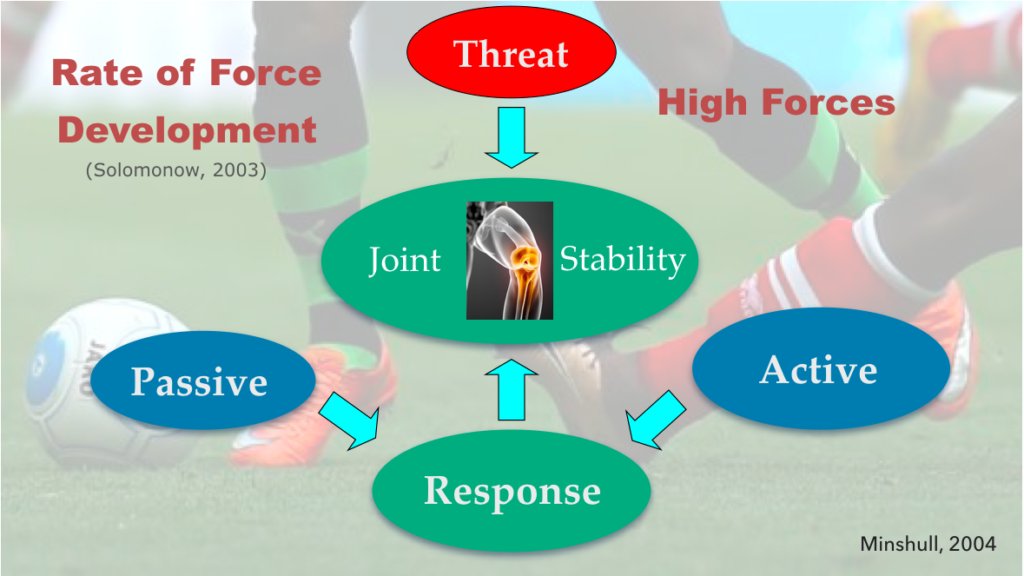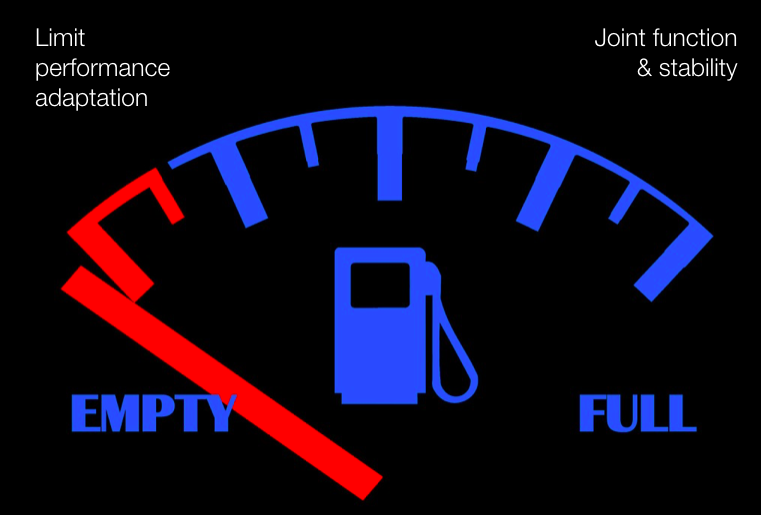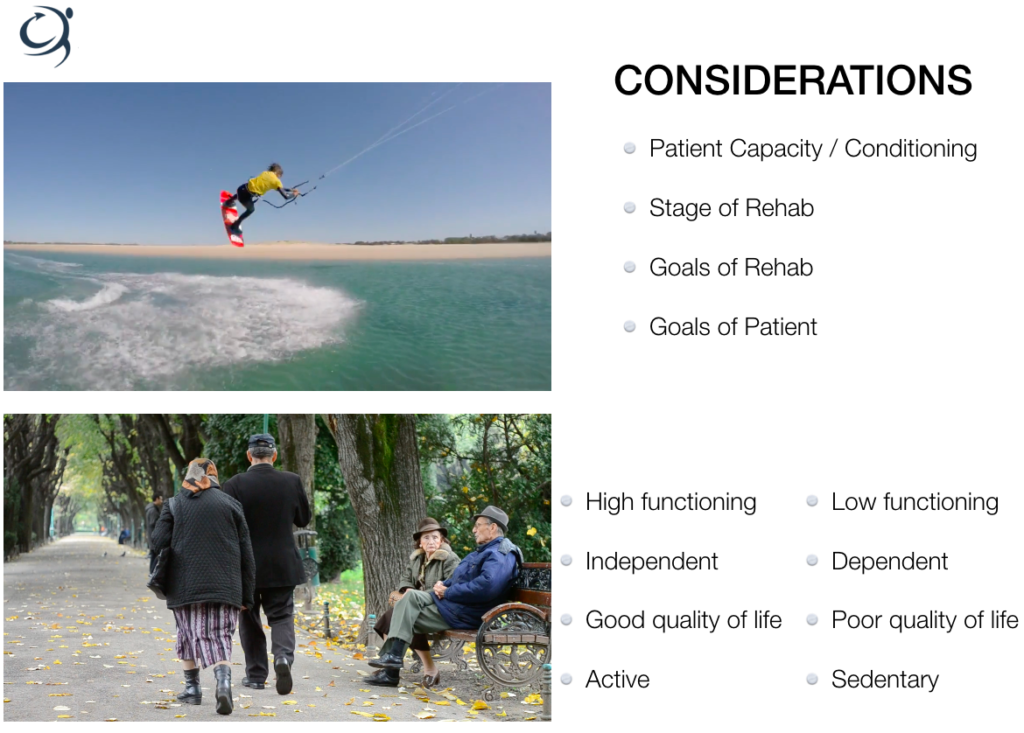Welcome to week 14 of Strength & Conditioning for Therapists. How’s it going, in this delightful summer weather? :-/ I’m going to book a holiday after typing this, I’m sick of the rain! Last week I gave a presentation at knee symposium in Surrey, UK. I was asked to talk on rehab and, following a few discussion with colleagues, decided to discuss power vs. strength. It’s an important discussion, so today we’re going to look at muscle strength or muscle power; which is most important for rehab?
There’s still there’s a bit of confusion about what each parameter is, how it’s trained and its relative importance in the hierarchy of all the things that require rehabilitating. Here’s my two penn’orth worth.
Muscle Strength or Muscle Power; The Relevance of the Discussion
Muscle power and muscle strength are different indices of function and they require a different approach to rehabilitation and conditioning. Both parameters are important for performance and mitigating injury across a spectrum of patient profiles, from the the high-functioning athlete to the lower-functioning older-adult. Yet which is most important, when, and in which patients requires considered thought.
Conceptual Model of Dynamic Joint Stability

As we know, the stability of a joint is determined by the complex interaction of the broadly ‘passive’ structures, including the osseous geometry, ligaments, menisci etc. (these structures do have sensory tissue, so are not truly passive) and the active component, which is basically the joint musculature.
The Importance of Muscle Power
During dynamic situations where ‘threats’ are imposed into the system caused by moving, running, twisting, decelerating etc. there’s a significant requirement of the musculature to shield the passive joint structures from dynamic forces via the production of stabilising, forceful contractions. The greater the force and, or, speed of application of these threats, the greater the requirement of the active structures to produce force, and quickly, to protect the joint.
Injuries tend to happen quickly (think back to if you’ve ever been injured, was this the case for you? It definitely was for me!), whether that be in sporting situations during a rapid declaration and directional change, or everyday activities like stumbling off a curb or tripping over.
So speed of injury is an issue, therefore speed of force production, i.e. muscle power is really important. We need to be able to deliver just the right amount of sub-maximal muscle force (whatever that might be) in a timely manner to mitigate injury risk. So, is muscle power more important than muscle strength and should it be the primary focus in rehabilitation…?
The Importance of Muscle Strength
Muscle strength (or maximal muscle strength, if you we’re being precise) is the:
maximal force generating capacity of a muscle or muscle group in a single contraction
During everyday activities, we don’t normally tend to use our full strength, even sprinting doesn’t require maximal strength output. Injury avoidance and dynamic joint stabilisation efforts shouldn’t require maximal strength either, so why bother with strength in rehab?
Muscle strength is the foundation upon which a number of other abilities are built.
Suchomel (2016). Sports Med; 46(10):1419–49
I love that quote, it’s so helpful. You can also think about muscle strength in terms of it being the fuel tank.

If your patient is running on empty, i.e. they have very limited strength, activation of fast twitch motor units, muscle volume etc. then sub-maximal tasks such as standing up out of a chair in the case of older or very frail people, becomes a significantly more challenging task, perhaps even requiring an effort of strength to achieve!
Secondly, think about trying to develop power in a patient with this level of conditioning – or lack thereof. Whilst speed of force production is important to help right posture and avoid a fall, if their fuel tank of strength is running, low, it doesn’t matter how quickly they can produce force if they don’t possess adequate force capacity to stabilise the joint(s).
The same arguments can hold true in athletic populations, it’s just the end goal that’s different. For example in jumping sports, power is super important, but don’t lose sight on rehabilitating muscle strength too. If you can improve muscle strength, to use the same analogy, there’s more force in the tank that you can subsequently train to produce more quickly…and ultimately result in the potential for higher or further distances jumped!
Deciding On Power vs Strength in Rehabilitation
So how to decide what to focus on, when and with whom? Difficult. Here’s what I presented last week in answer to this question:

Basically, first consider your patient, what is their current/baseline capacity? Do they possess sufficient strength for what the wish to get back to doing and the threats that thaey will encounter? Side note here – there’s always a rationale for strength training with patients >50years in my opinion (well those who don’t do it already!). In the case of an acute injury in a well-trained person that requires little time out of training (and associated deconditioning), you may reason that strength doesn’t need to be the primary focus of the rehab. (You may also reason that a lack of strength might have been a risk factor, and thus should be a focus – but that’s another post!). In an older person, or in a post-operative patient where you can reason that there’s been significant loss of muscle strength, then restoration of muscle strength may absolutely be the primary focus, followed by power.
Summary
So, Strength and Power are different indices of muscle function and require separate consideration within a rehabilitation programme. Which is most important? Both. However, I think the first and most important question to ask yourself is whether or not you consider your patient to posses sufficient strength, or enough fuel in the tank, before you dismiss this as an integral rehabilitation outcome.
Check out our online and in-person course listings

